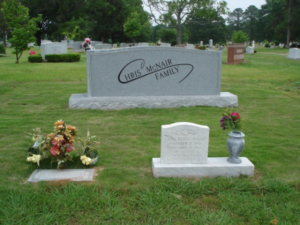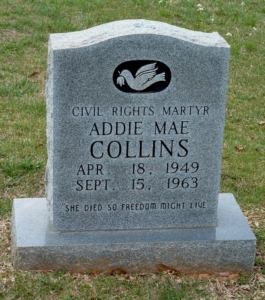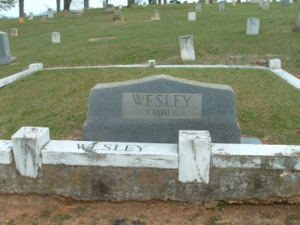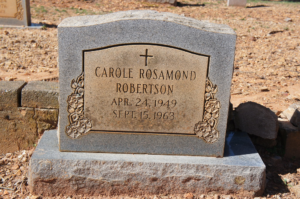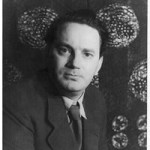 On this day in 1938, novelist Thomas Wolfe died from miliary tuberculosis of the brain at Johns Hopkins Hospital in Baltimore at the age of 37. Born Thomas Clayton Wolfe on 3 October 1900 in Asheville, North Carolina. Haled as either a genius or merely a writer of bad prose. Wolfe wrote four lengthy novels (Look Homeward, Angel; Of Time and the River; You Can’t Go Home Again; The Web and the Rock), plus many short stories, dramatic works and novellas. He is known for mixing highly original, poetic, rhapsodic, and impressionistic prose with autobiographical writing. His books, written and published from the 1920s to the 1940s, vividly reflect on American culture and mores of the period, albeit filtered through Wolfe’s sensitive, sophisticated and hyper-analytical perspective. He became very famous during his own lifetime. After Wolfe’s death, his chief contemporary William Faulkner reportedly said that Wolfe may have had the best talent of their generation. He remains one of the most important writers in modern American literature, as he was one of the first masters of autobiographical fiction. In my opinion, he is North Carolina’s most famous writer.
On this day in 1938, novelist Thomas Wolfe died from miliary tuberculosis of the brain at Johns Hopkins Hospital in Baltimore at the age of 37. Born Thomas Clayton Wolfe on 3 October 1900 in Asheville, North Carolina. Haled as either a genius or merely a writer of bad prose. Wolfe wrote four lengthy novels (Look Homeward, Angel; Of Time and the River; You Can’t Go Home Again; The Web and the Rock), plus many short stories, dramatic works and novellas. He is known for mixing highly original, poetic, rhapsodic, and impressionistic prose with autobiographical writing. His books, written and published from the 1920s to the 1940s, vividly reflect on American culture and mores of the period, albeit filtered through Wolfe’s sensitive, sophisticated and hyper-analytical perspective. He became very famous during his own lifetime. After Wolfe’s death, his chief contemporary William Faulkner reportedly said that Wolfe may have had the best talent of their generation. He remains one of the most important writers in modern American literature, as he was one of the first masters of autobiographical fiction. In my opinion, he is North Carolina’s most famous writer.
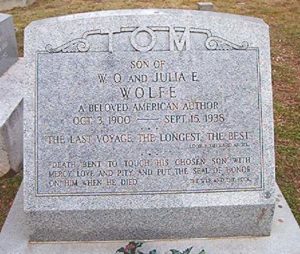 The Final Footprint – Wolfe is buried in Riverside Cemetery in Asheville. His grave is marked by an upright slanted granite monument. In addition to the birth and death dates the monument is inscribed: TOM, SON OF W. O. AND JULIA E. WOLFE, A BELOVED AMERICAN AUTHOR, “THE LAST VOYAGE, THE LONGEST, THE BEST” LOOK HOMEWARD ANGEL, “DEATH BENT TO TOUCH HIS CHOSEN SON WITH MERCY, LOVE AND PITY AND PUT THE SEAL OF HONOR ON HIM WHEN HE DIED” THE WEB AND THE ROCK. The Thomas Wolfe Society was established in the late 1970s to promote appreciation and study of the works of this famous American author. The Society meets annually in May at locations in the U.S. or Europe visited by Wolfe. Recent conferences have been held in Greenville, South Carolina, Paris, France, and Saint Louis, Missouri. The Society issues an annual publication of Wolfe-related materials, as well as its signature journal, The Thomas Wolfe Review, featuring scholarly articles, belles lettres, and reviews. The Society also awards prizes for literary scholarship on Wolfe.
The Final Footprint – Wolfe is buried in Riverside Cemetery in Asheville. His grave is marked by an upright slanted granite monument. In addition to the birth and death dates the monument is inscribed: TOM, SON OF W. O. AND JULIA E. WOLFE, A BELOVED AMERICAN AUTHOR, “THE LAST VOYAGE, THE LONGEST, THE BEST” LOOK HOMEWARD ANGEL, “DEATH BENT TO TOUCH HIS CHOSEN SON WITH MERCY, LOVE AND PITY AND PUT THE SEAL OF HONOR ON HIM WHEN HE DIED” THE WEB AND THE ROCK. The Thomas Wolfe Society was established in the late 1970s to promote appreciation and study of the works of this famous American author. The Society meets annually in May at locations in the U.S. or Europe visited by Wolfe. Recent conferences have been held in Greenville, South Carolina, Paris, France, and Saint Louis, Missouri. The Society issues an annual publication of Wolfe-related materials, as well as its signature journal, The Thomas Wolfe Review, featuring scholarly articles, belles lettres, and reviews. The Society also awards prizes for literary scholarship on Wolfe.
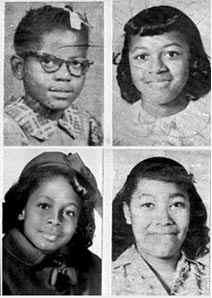 On this day in 1963, Addie Mae Collins (14), Cynthia Wesley (14), Carole Robertson (14), and Carol Denise McNair (11) were murdered when a bomb exploded under the steps of the 16th Street Baptist Church in Birmingham, Alabama. The white supremacist terrorist bombing was carried out by our members of a local Ku Klux Klan chapter.
On this day in 1963, Addie Mae Collins (14), Cynthia Wesley (14), Carole Robertson (14), and Carol Denise McNair (11) were murdered when a bomb exploded under the steps of the 16th Street Baptist Church in Birmingham, Alabama. The white supremacist terrorist bombing was carried out by our members of a local Ku Klux Klan chapter.
Described by Martin Luther King Jr. as “one of the most vicious and tragic crimes ever perpetrated against humanity”, the explosion injured between 14 and 22 other people.
Although the FBI had concluded in 1965 that the 16th Street Baptist Church bombing had been committed by four known Klansmen and segregationists: Thomas Edwin Blanton Jr., Herman Frank Cash, Robert Edward Chambliss, and Bobby Frank Cherry, no prosecutions were conducted until 1977, when Robert Chambliss was tried and convicted of the first-degree murder of one of the victims, 11-year-old Carol Denise McNair.
In a revival of effort by states and the federal government to prosecute cold cases from the civil rights era, the state conducted trials in the early 21st century of Thomas Edwin Blanton Jr. and Bobby Cherry, who were each convicted of four counts of murder and sentenced to life imprisonment in 2001 and 2002, respectively. Future United States Senator Doug Jones successfully prosecuted Blanton and Cherry. Herman Cash had died in 1994, and was never charged with his alleged involvement in the bombing.
The 16th Street Baptist Church bombing marked a turning point in the United States during the civil rights movement and contributed to support for passage by Congress of the Civil Rights Act of 1964.
The Final Footprint
Robertson was laid to rest in a private family funeral held on September 17, 1963. The service was held at St. John’s African Methodist Episcopal Church. In attendance were 1,600 people. At this service, the Reverend C. E. Thomas told the congregation: “The greatest tribute you can pay to Carole is to be calm, be lovely, be kind, be innocent.”
On September 18, the funeral of the three other girls was held at the Sixth Avenue Baptist Church. Although no city officials attended this service, an estimated 800 clergymen of all races were among the attendees. Also present was Martin Luther King Jr. In a speech conducted before the burials of the girls, King addressed an estimated 3,300 mourners with a speech saying:
This tragic day may cause the white side to come to terms with its conscience. In spite of the darkness of this hour, we must not become bitter … We must not lose faith in our white brothers. Life is hard. At times as hard as crucible steel, but, today, you do not walk alone.
As the girls’ coffins were taken to their graves, King directed that those present remain solemn and forbade any singing, shouting or demonstrations. These instructions were relayed to the crowd present by a single youth with a bullhorn.
Collins, Wesley and Robertson are interred at Greenwood Cemetery in Birmingham. McNair is interred in Elmwood Cemetery in Birmingham.
 On this day in 1989, poet, novelist, and literary critic and was one of the founders of New Criticism, Robert Penn Warren died at the age of 84 in Stratton, Vermont of complications from bone cancer. Born on 24 April 1905 in Guthrie, Kentucky. Warren was a charter member of the Fellowship of Southern Writers. He founded the influential literary journal The Southern Review with Cleanth Brooks in 1935. He received the 1947 Pulitzer Prize for the Novel for his novel All the King’s Men (1946) and the Pulitzer Prize for Poetry in 1958 and 1979. He is the only person to have won Pulitzer Prizes for both fiction and poetry.
On this day in 1989, poet, novelist, and literary critic and was one of the founders of New Criticism, Robert Penn Warren died at the age of 84 in Stratton, Vermont of complications from bone cancer. Born on 24 April 1905 in Guthrie, Kentucky. Warren was a charter member of the Fellowship of Southern Writers. He founded the influential literary journal The Southern Review with Cleanth Brooks in 1935. He received the 1947 Pulitzer Prize for the Novel for his novel All the King’s Men (1946) and the Pulitzer Prize for Poetry in 1958 and 1979. He is the only person to have won Pulitzer Prizes for both fiction and poetry.
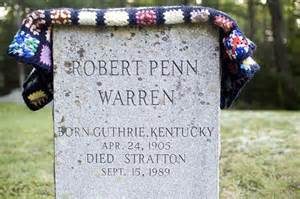 The Final Footprint – Warren is interred in Willis Cemetery in Stratton, Vermont, and, at his request, a memorial marker is situated in the Warren family gravesite in Guthrie, Kentucky. Warren is one of my favorite writers. Each year on his birthday I read some of his short stories and poems.
The Final Footprint – Warren is interred in Willis Cemetery in Stratton, Vermont, and, at his request, a memorial marker is situated in the Warren family gravesite in Guthrie, Kentucky. Warren is one of my favorite writers. Each year on his birthday I read some of his short stories and poems.
 On this day in 2017, United States Navy veteran, actor, musician and singer Harry Dean Stanton died at the Cedars-Sinai Medical Center in Los Angeles, California, at the age of 91. Born July 14, 1926 in West Irvine, Kentucky.
On this day in 2017, United States Navy veteran, actor, musician and singer Harry Dean Stanton died at the Cedars-Sinai Medical Center in Los Angeles, California, at the age of 91. Born July 14, 1926 in West Irvine, Kentucky.
In a career that spanned more than six decades, Stanton played supporting roles in the films Cool Hand Luke (1967), Kelly’s Heroes (1970), Dillinger (1973), The Godfather Part II (1974), Alien (1979), Escape from New York (1981), Christine (1983), Repo Man (1984), Pretty in Pink (1986), The Last Temptation of Christ (1988), Wild at Heart (1990), The Straight Story (1999), The Green Mile (1999), Alpha Dog (2006) and Inland Empire (2006). He was given rare lead roles in Wim Wenders’ classic Paris, Texas (1984) and Lucky (2017), his last film.
The Final Footprint
Stanton was cremated and his ashes were spread outside downtown Lexington, Kentucky.
 And on this day in 2019 singer, songwriter, musician and record producer, primary co-lead vocalist, rhythm guitarist, songwriter, and frontman for the rock band the Cars, Ric Ocasek died from natural causes at his New York City townhouse, aged 75. Born Richard Theodore Otcasek on March 23, 1944 in Baltimore. In addition to his work with the Cars, Ocasek recorded seven solo albums, and his song “Emotion in Motion” was a top 20 hit in the United States in 1986. In 2018, Ocasek was inducted into the Rock and Roll Hall of Fame as a member of the Cars.
And on this day in 2019 singer, songwriter, musician and record producer, primary co-lead vocalist, rhythm guitarist, songwriter, and frontman for the rock band the Cars, Ric Ocasek died from natural causes at his New York City townhouse, aged 75. Born Richard Theodore Otcasek on March 23, 1944 in Baltimore. In addition to his work with the Cars, Ocasek recorded seven solo albums, and his song “Emotion in Motion” was a top 20 hit in the United States in 1986. In 2018, Ocasek was inducted into the Rock and Roll Hall of Fame as a member of the Cars.
Ocasek and Cars co-founder Benjamin Orr were close friends who became estranged when the band broke up. The two reconciled prior to Orr’s death in 2000. Their friendship was commemorated in the song “Silver”, which Ocasek wrote in memory of Orr.
Ocasek was married three times. His first wife Constance divorced him in Ohio in 1971. In the same year he married Suzanne Otcasek, who uses the original spelling of Ocasek’s name. They were married for 17 years. During filming of the music video for the Cars’ song “Drive” in 1984, Ocasek met 18-year-old Czech-born supermodel Paulina Porizkova, while he was still married to Suzanne. Ocasek and Suzanne divorced in 1988. He and Porizkova were married on August 23, 1989 on Saint-Barthélemy island. In May 2018, Porizkova announced she and Ocasek had separated a year earlier.
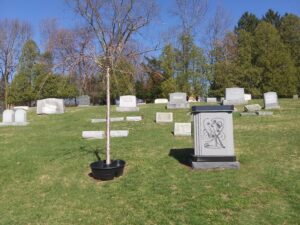
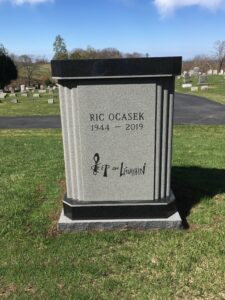 The Final Footprint – Ocasek was found dead Porizkova. He had been recovering from surgery. Nine Partners Cemetery, Millbrook, New York.
The Final Footprint – Ocasek was found dead Porizkova. He had been recovering from surgery. Nine Partners Cemetery, Millbrook, New York.
Have you planned yours yet?
Follow TFF on twitter @RIPTFF

